How to Repurpose Content for Maximum Reach and Impact


Repurposing content is the secret weapon smart marketers use to multiply their reach. Some companies have turned a single article into over ten unique content pieces, sparking traffic from every corner of the web. Most people believe repurposing means endless copying and pasting, but that could not be further from the truth. The trick is not about working harder or endlessly creating from scratch. It is about finding hidden treasure in what you already have and transforming one smart move into a whole new set of opportunities.
Table of Contents
- Step 1: Analyze Your Existing Content Assets
- Step 2: Identify Target Formats For Repurposing
- Step 3: Create A Repurposing Plan For Each Asset
- Step 4: Produce New Content From Existing Materials
- Step 5: Distribute And Promote The Repurposed Content
- Step 6: Evaluate The Impact And Adjust Your Strategy
Quick Summary
| Key Point | Explanation |
|---|---|
| 1. Conduct a thorough content audit | Assess existing content to identify valuable pieces for repurposing and strategic opportunities. |
| 2. Identify diverse formats for repurposing | Map original content to various formats that suit different audiences and platforms for maximum reach. |
| 3. Create a structured repurposing plan | Develop a detailed plan outlining transformation strategies, target platforms, and expected audience engagement. |
| 4. Produce new content creatively | Maintain core messaging while adapting content for different formats to enhance engagement and relevance. |
| 5. Distribute and promote effectively | Use tailored distribution strategies across platforms to maximize visibility and audience interaction with repurposed content. |
Step 1: Analyze Your Existing Content Assets
The first critical step in repurposing content is conducting a comprehensive audit of your existing content assets. This strategic process allows you to uncover hidden potential within your current materials and identify opportunities for transformation and expanded reach. Content analysis is not just about reviewing what you have, but understanding its underlying value and potential for reinvention.
Begin by gathering all your existing content across different platforms and formats. This includes blog posts, videos, podcasts, social media posts, whitepapers, case studies, and webinars. Use spreadsheet tools like Google Sheets or content management platforms to catalog each piece systematically. Track essential metrics such as original publication date, content type, performance statistics (views, shares, engagement rates), and core topics covered.
As you review your content inventory, look for high-performing pieces that demonstrate consistent audience engagement. Learn more about creating shareable content that resonates with your target demographic. Pay special attention to evergreen content with timeless information that can be easily adapted to different formats. Identify patterns in your most successful content such as specific topics, storytelling approaches, or visual styles that consistently attract audience attention.
While analyzing your content, consider these key evaluation criteria:
- Relevance to current audience interests
- Alignment with your brand's current messaging
- Potential for updating or expanding existing information
- Performance metrics indicating strong audience connection
- Opportunities for cross-platform transformation
The goal of this initial analysis is not just to catalog your content, but to strategically map out potential repurposing opportunities that will maximize your existing intellectual assets. By understanding the inherent value of each piece, you can transform single content investments into multiple powerful communication channels, extending your reach without requiring extensive new content creation.
Below is an at-a-glance table summarizing the main steps of the content repurposing process, including each step's focus and intended outcome for consistent results.
| Step | Focus Area | Key Outcome |
|---|---|---|
| 1 | Content Audit | Identify valuable assets for repurposing |
| 2 | Format Identification | Map content to diverse target formats |
| 3 | Repurposing Plan | Build a detailed transformation roadmap |
| 4 | Content Production | Adapt materials into fresh, engaging formats |
| 5 | Distribution & Promotion | Maximize reach through tailored strategies |
| 6 | Evaluation & Adjustment | Optimize approach with performance insights |
Step 2: Identify Target Formats for Repurposing
Transforming existing content into multiple formats is an art that requires strategic thinking and creative approach.
The goal of format identification is to maximize your content's reach while minimizing additional production effort. Different platforms and audience segments consume content uniquely, making format diversification crucial for comprehensive engagement.
Start by mapping your content to potential transformation opportunities. A long-form blog post might become a podcast episode, an infographic, a series of social media posts, or a short video tutorial. Consider the strengths of each platform and how your original content can be adapted to suit different audience preferences. Explore strategies for creating captivating content that resonates across multiple channels.
Understand that not every piece of content will work perfectly in every format. Evaluate your original material through the lens of each potential new format. Technical white papers might translate well into slide decks or webinars, while storytelling blog posts could become engaging short-form videos or podcast narratives. Visual content like data-rich articles often work brilliantly as infographics or animated explainer videos.
When selecting target formats, consider these critical factors:
- Platform-specific audience expectations
- Technical complexity of content transformation
- Resource requirements for format adaptation
- Potential engagement metrics for each proposed format
- Alignment with your overall content marketing strategy
The most successful content repurposing strategies recognize that each format requires thoughtful adaptation. Simply copying and pasting content across platforms will not yield meaningful results. Instead, thoughtfully reimagine your content to speak directly to the unique characteristics of each platform and audience segment, ensuring your message remains consistent while feeling native to each environment.
To help determine which content formats are best for your assets, the table below compares format options, audience preferences, and suitable content types for repurposing.
| Format | Best For | Common Source Content |
|---|---|---|
| Blog Post | Detailed explanations, SEO | Whitepapers, case studies |
| Podcast | Storytelling, interviews | Blog posts, webinars |
| Video | Visual learners, demos | Blog posts, tutorials |
| Infographic | Data visualization | Reports, data-rich articles |
| Slide Deck | Presentations, summaries | Whitepapers, research |
| Social Media Post | Quick tips, highlights | Blog posts, articles |
Step 3: Create a Repurposing Plan for Each Asset
A strategic repurposing plan transforms your content from a single-use resource into a versatile marketing powerhouse. The key is developing a systematic approach that maximizes each content asset's potential while maintaining its core message and value. This step requires careful mapping of your content's journey across different platforms and formats.
Begin by creating a detailed spreadsheet or content management document that tracks each potential repurposing opportunity. For each content piece, outline specific transformation strategies, target platforms, estimated production time, and potential audience reach. Learn more about creating an effective content calendar to help organize your repurposing efforts systematically.
Consider the unique characteristics of each content format and how they align with your original material. A comprehensive white paper might be broken down into multiple blog posts, social media snippets, and an accompanying podcast episode. The goal is to deconstruct your original content intelligently, ensuring each new format provides genuine value and maintains the integrity of the original message.
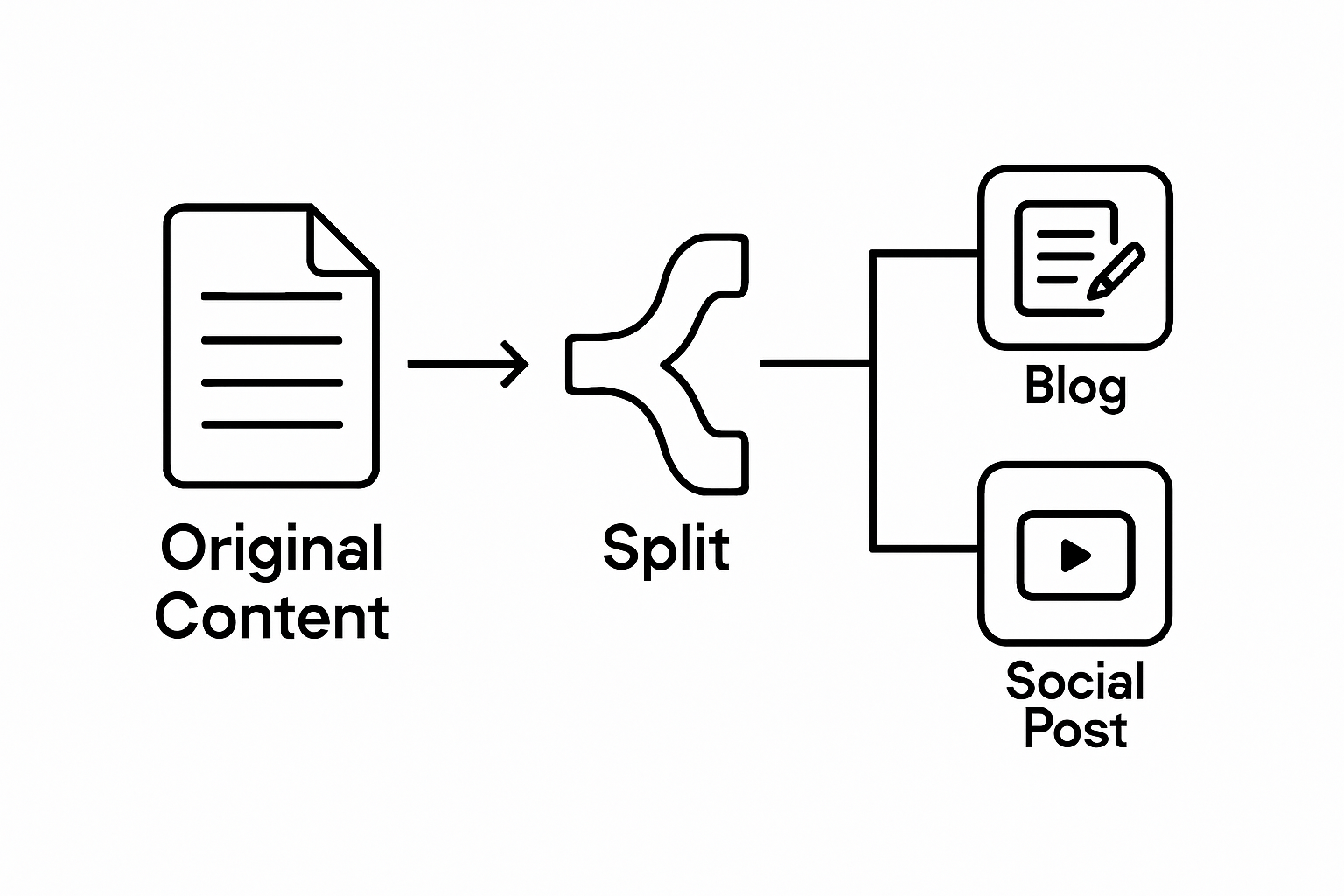
When developing your repurposing plan, prioritize these critical elements:
- Consistent brand voice across all transformed content
- Clear identification of primary and secondary target audiences
- Specific goals for each repurposed content piece
- Estimated production resources and timelines
- Metrics for measuring repurposed content performance
Successful content repurposing is not about creating duplicate materials, but about thoughtfully reimagining your content to provide fresh perspectives and insights. Each transformed piece should feel intentional and tailored to its new format, speaking directly to the audience's preferences and consumption habits. By approaching repurposing as a strategic content expansion rather than a mechanical reproduction, you'll create a dynamic, multi-channel content ecosystem that maximizes your original intellectual investment.
Step 4: Produce New Content from Existing Materials
Transforming existing content into fresh, engaging materials requires creativity, strategic thinking, and a deep understanding of your audience's preferences. This step is where your careful planning from previous stages comes to life, turning analyzed content assets into dynamic new communication pieces that capture attention across multiple platforms.
Begin the production process by selecting the most promising content pieces identified in your earlier analysis. Focus on materials with evergreen information that can be easily adapted to different formats. For instance, a comprehensive research report might become a series of bite-sized social media graphics, an animated explainer video, or a podcast discussion exploring the key findings. Explore our guide on creating captivating content to enhance your transformation strategies.
When producing new content, maintain a laser focus on maintaining the original material's core message while adapting its presentation. This means rewriting text to suit different platforms, redesigning visuals to match each channel's aesthetic, and adjusting the tone and complexity to match audience expectations. A technical white paper might become a simplified infographic for LinkedIn, while the same content could be expanded into a detailed webinar for industry professionals.
Consider these critical factors during content production:
- Consistency of brand voice across all new formats
- Technical requirements of each target platform
- Audience engagement potential for each content type
- Resource allocation for content transformation
- Potential SEO and marketing benefits
Successful content reproduction is not about quantity, but strategic quality. Each new piece should feel intentional and valuable, offering fresh perspectives or presenting familiar information in an innovative way.
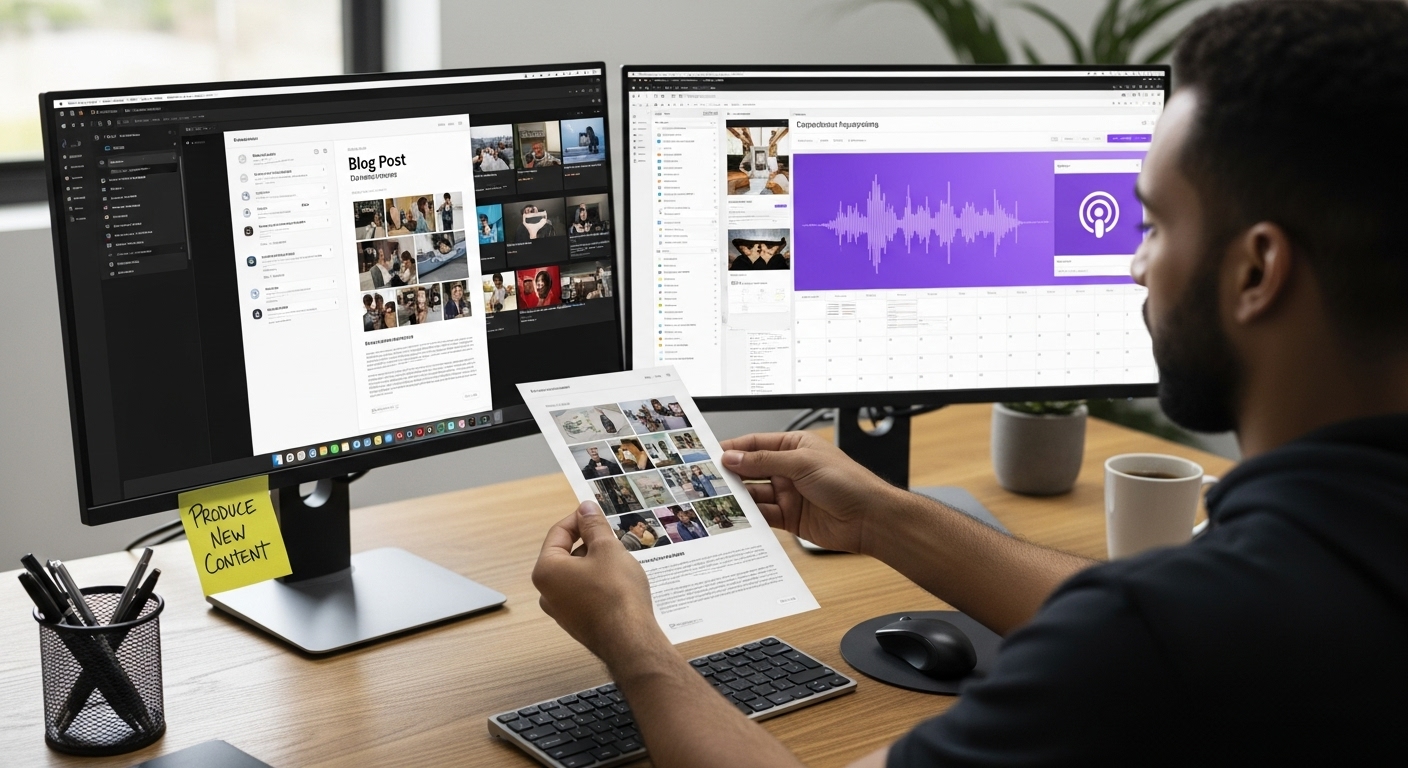 By approaching content transformation as an opportunity for creative storytelling, you'll develop a robust, multi-dimensional content ecosystem that keeps your audience engaged and hungry for more insights.
By approaching content transformation as an opportunity for creative storytelling, you'll develop a robust, multi-dimensional content ecosystem that keeps your audience engaged and hungry for more insights.
Step 5: Distribute and Promote the Repurposed Content
Distribution and promotion are the critical final stages that transform your carefully repurposed content from potential into actual audience engagement. This step requires a strategic, multi-channel approach that maximizes visibility and ensures your reimagined content reaches the right audiences at the right time.
Begin by developing a comprehensive distribution strategy that considers the unique characteristics of each platform. Different social media channels, professional networks, email lists, and industry forums require tailored approaches to content sharing. Explore our guide on maximizing organic reach to understand how to optimize your content distribution effectively. Timing matters significantly strategy, so schedule your content releases to align with peak audience activity periods and relevant industry conversations.
Promoting repurposed content goes beyond simple posting. Engage with your audience by providing context, asking questions, and encouraging interaction. For video content, create teaser clips that entice viewers. For written materials, develop compelling headlines and preview snippets that spark curiosity. Consider leveraging paid promotion options on platforms like LinkedIn, Facebook, and Twitter to extend your content's reach beyond organic networks.
Consider these essential distribution and promotion considerations:
- Platform-specific content optimization techniques
- Targeted advertising and boosting strategies
- Collaborative sharing with industry partners
- Engaging with comments and discussions
- Tracking performance across different channels
Successful content distribution is an ongoing process of measurement, learning, and refinement. Monitor your content's performance using analytics tools, paying attention to engagement rates, shares, and audience feedback. Each piece of repurposed content is an opportunity to understand your audience better, refine your messaging, and build a more responsive, interactive content ecosystem that continues to grow and evolve with your audience's interests.
Step 6: Evaluate the Impact and Adjust Your Strategy
Measuring the effectiveness of your repurposed content is not just about collecting data, but about transforming insights into actionable strategies that continuously improve your content marketing approach. This final step bridges your current efforts with future content optimization, creating a dynamic, responsive content ecosystem.
Utilize comprehensive analytics tools to track performance across different platforms and content formats. Learn more about measuring SEO success to understand the nuanced metrics that truly indicate content performance. Look beyond surface-level engagement metrics like views and likes, diving deeper into indicators such as time spent on page, conversion rates, audience retention, and the specific actions taken after consuming your repurposed content.
Analyzing your content's performance requires a holistic approach. Compare the performance of original and repurposed content pieces, identifying which formats and platforms generated the most meaningful engagement. Pay attention to audience feedback, comments, and interaction patterns. These qualitative insights often reveal more about content effectiveness than quantitative data alone. Consider conducting periodic surveys or focus groups to gather direct input from your target audience about their content consumption preferences.
Consider these critical evaluation parameters:
- Engagement rate across different content formats
- Conversion metrics for each repurposed piece
- Audience demographic interaction patterns
- Cost-effectiveness of content transformation
- Long-term brand awareness and reach
The most successful content strategies are those that remain flexible and responsive. Use your evaluation findings to continuously refine your repurposing approach. This might mean adjusting your content formats, targeting different platforms, or developing entirely new transformation strategies based on audience insights. Remember that content repurposing is an iterative process where each cycle of creation, distribution, and evaluation brings you closer to a more sophisticated, audience-centric content marketing approach.
Unlock Effortless Content Repurposing with AI-Powered SEO
Are you overwhelmed by the endless task of auditing, reformatting, and distributing your content for greater reach? The article highlighted how time-consuming it can be to organize your assets, pinpoint evergreen topics, and create a repurposing plan that really pays off. If you are seeking a smarter, scalable way to multiply your content's impact without burning out or missing key opportunities, there is a solution designed just for you.
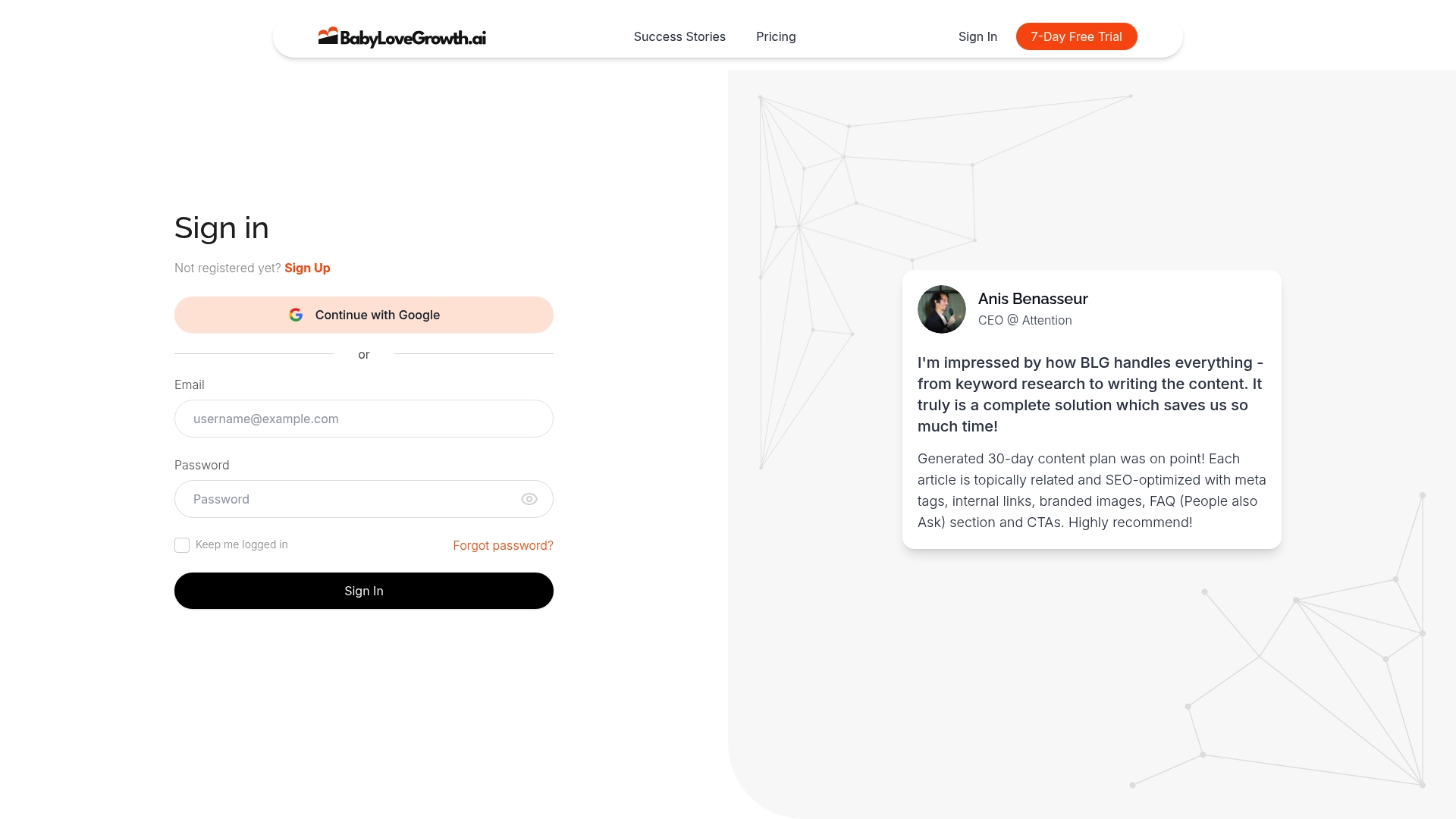
Experience automated content transformation and data-driven strategy with Babylovegrowth.ai. Our platform analyzes your business needs, delivers high-quality AI-powered articles, and even creates a personalized 30-day content plan that aligns with every step from asset analysis to multi-channel distribution. Why rely on outdated manual processes when you can put your SEO and organic growth on autopilot? Start your free trial now at Babylovegrowth.ai and see how quickly your repurposed content can reach new audiences and drive measurable results.
Frequently Asked Questions
How can I analyze my existing content for repurposing?
Begin by conducting a comprehensive content audit, which involves gathering all your existing materials from various platforms and formats. Catalog them using a spreadsheet, tracking essential metrics such as publication date, performance statistics, and core topics to identify high-performing pieces that can be repurposed.
What types of formats can I use to repurpose my content?
You can transform your content into various formats such as blog posts, podcasts, videos, infographics, slide decks, and social media posts. Each format should align with the strengths of the platform and preferences of your target audience to maximize engagement.
How do I create a repurposing plan for my content?
Develop a systematic repurposing plan by identifying specific transformation strategies for each content piece. Outline target platforms, estimated production times, and potential audience reach to ensure that you leverage your content assets effectively across multiple formats.
What metrics should I track to evaluate the impact of my repurposed content?
Focus on metrics such as engagement rates, time spent on page, conversion rates, and audience retention. Analyzing qualitative insights from audience feedback is also crucial as it helps you refine your approach and optimize future content repurposing efforts.
Recommended
Smart SEO,
Faster Growth!
Most Read Articles
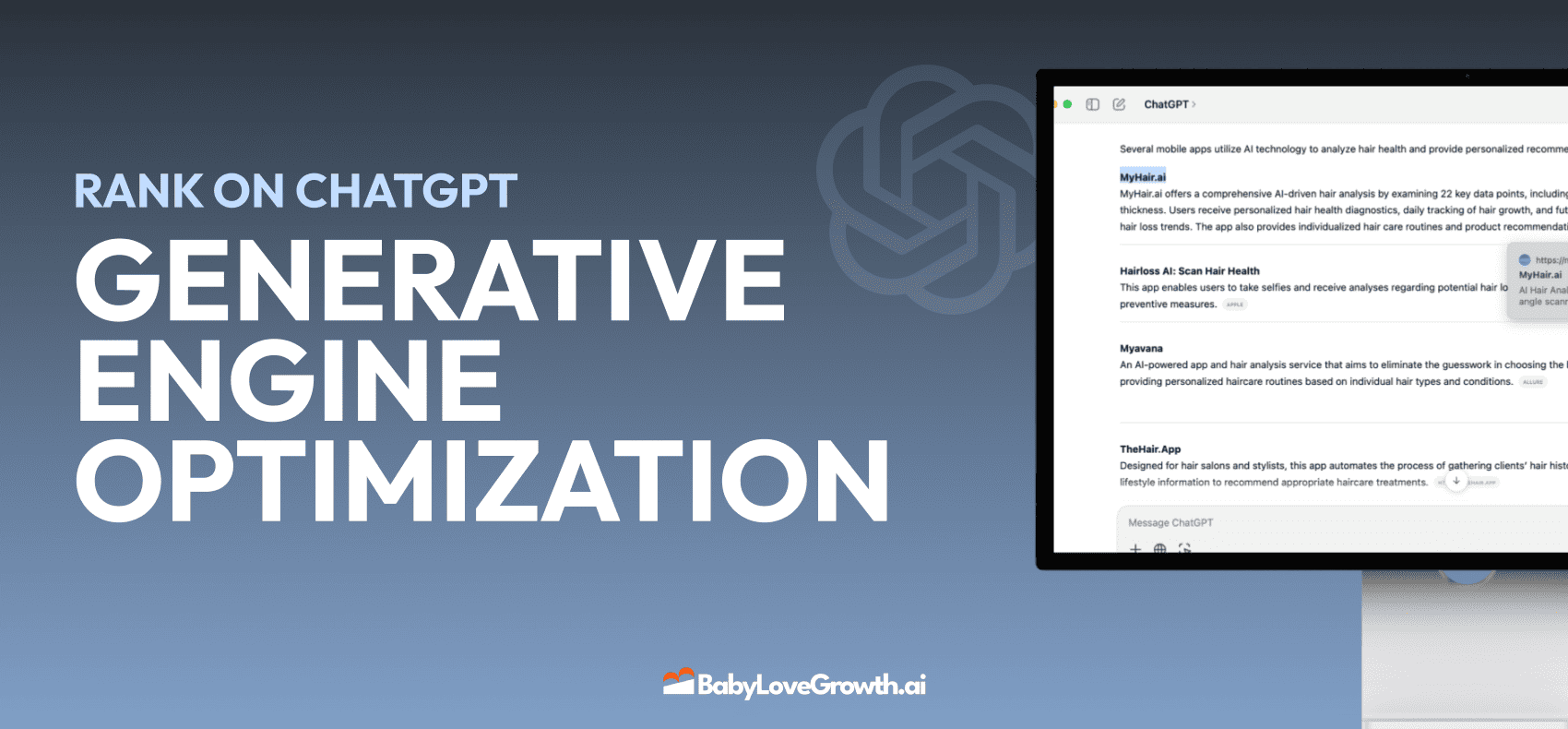
Generative Engine Optimization (GEO)
Learn how Generative Engine Optimization (GEO) helps your content rank in AI search engines like ChatGPT and Google AI. This comprehensive guide explains the differences between SEO and GEO, why it matters for your business, and practical steps to implement GEO strategies for better visibility in AI-generated responses.
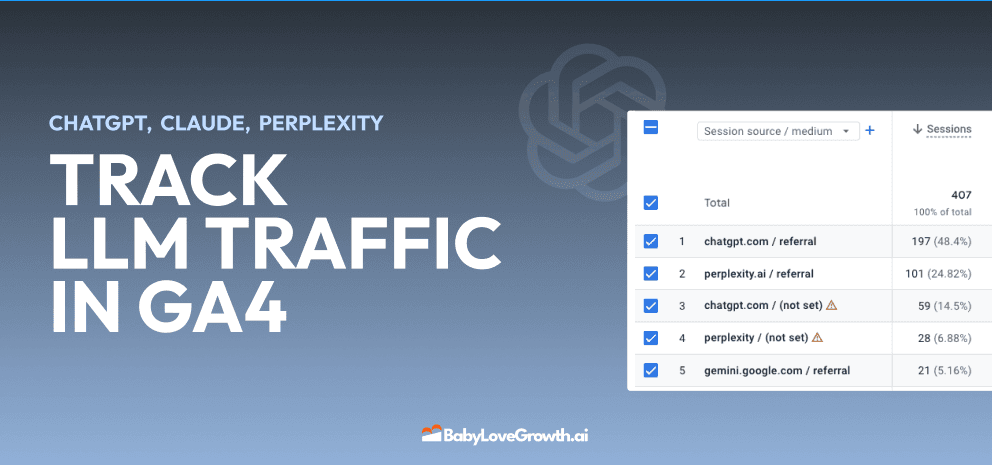
Track LLM Traffic in Google Analytics 4 (GA4)
Learn how to track and analyze traffic from AI sources like ChatGPT, Claude, Perplexity, and Google Gemini in Google Analytics 4. This step-by-step guide shows you how to set up custom filters to monitor AI-driven traffic and make data-driven decisions for your content strategy.
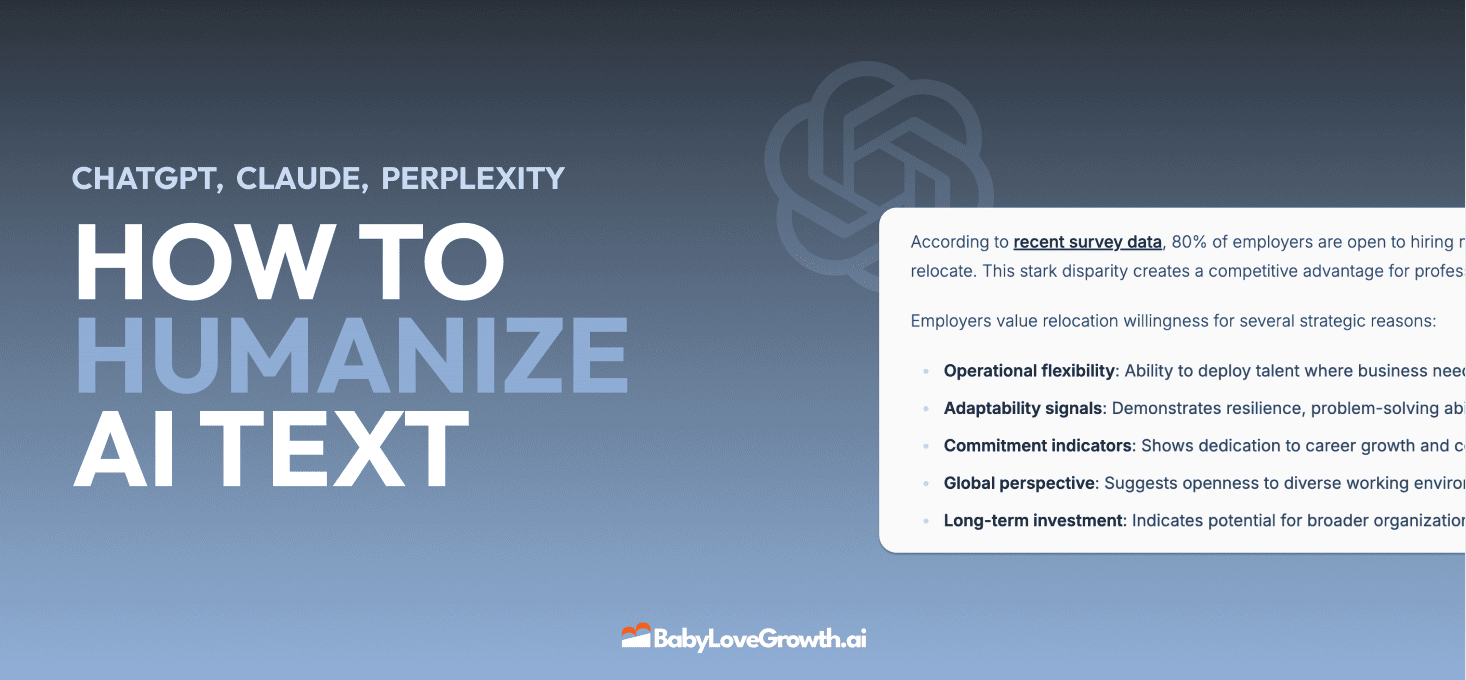
How to Humanize AI Text with Instructions
Learn practical techniques to make AI-generated content sound more natural and human. This guide covers active voice, direct addressing, concise writing, and other proven strategies to transform robotic text into engaging content.
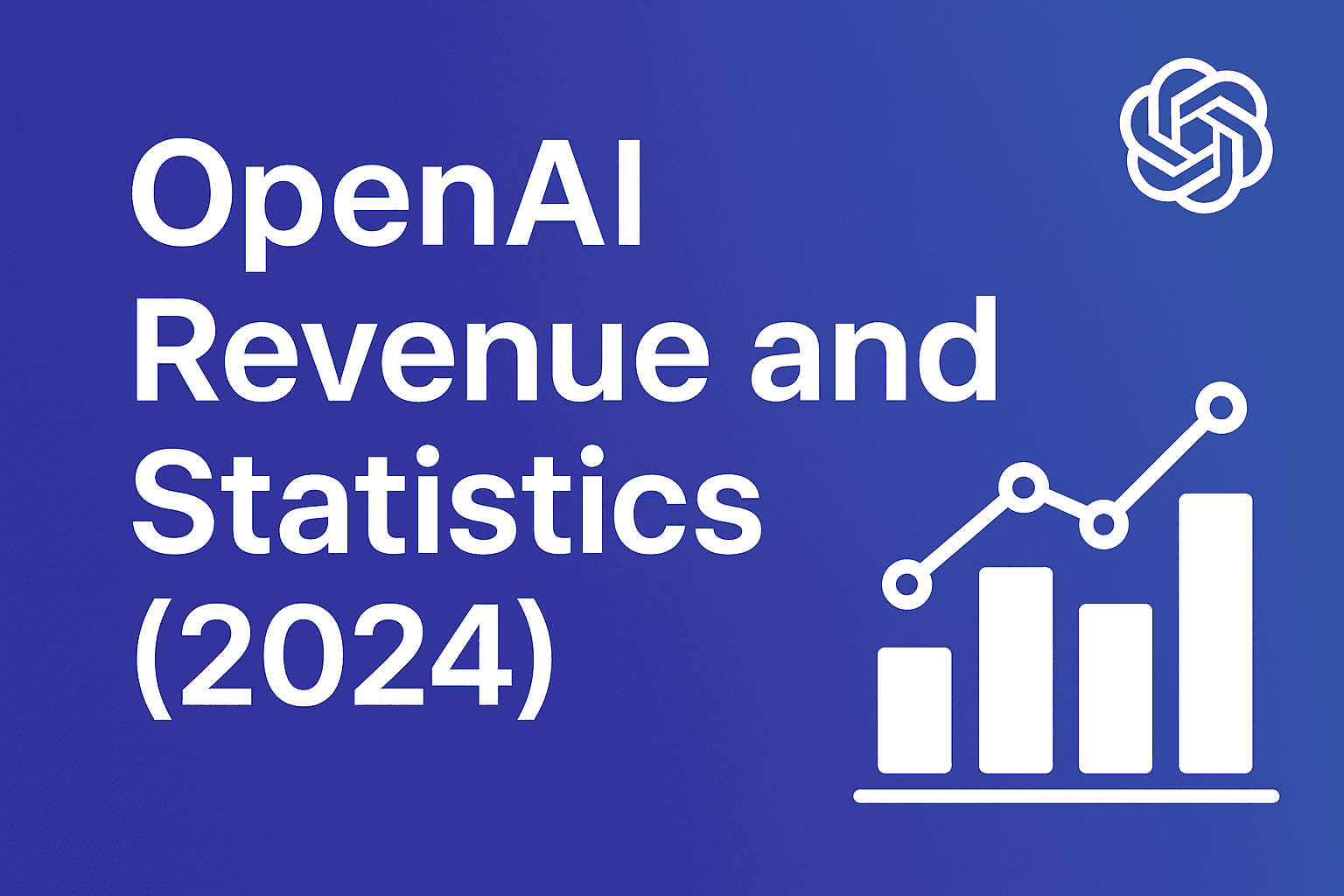
Open AI Revenue and Statistics (2024)
Comprehensive analysis of OpenAI financial performance, user engagement, and market position in 2023. Discover key statistics including $20B valuation, $1B projected revenue, and 100M+ monthly active users.